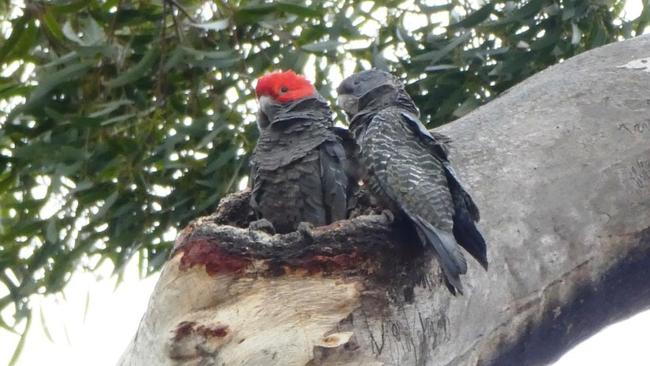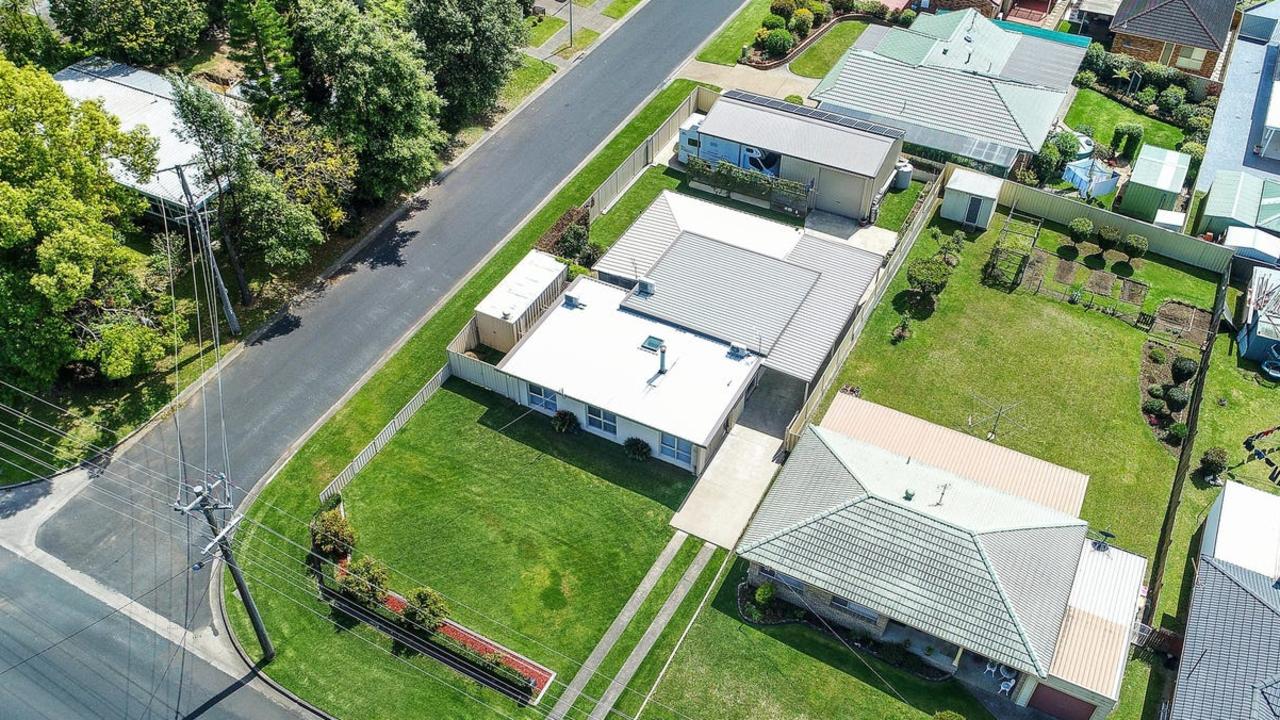Canberra expert recruited in fight to save South Coast’s iconic gang-gang cockatoo
In the past two decades the number of gang-gang cockatoos has fallen to less than half. A group of South Coast citizen scientists are hoping to reverse that, with expert help from Canberra.
The South Coast News
Don't miss out on the headlines from The South Coast News. Followed categories will be added to My News.
Local citizen scientists are on the front line of the decades-long fight to save the iconic gang-gang cockatoo from extinction, as experts struggle to reverse a stunning 69 per cent decline in the native bird’s population.
Numbers of the the notable red-headed bird have fallen sharply since the turn of the century as a result of habitat loss, particularly the removal of trees suitable for nesting, and have lead to the gang-gang being listed as endangered, according to the Federal Government.
While local enthusiasts have mobilised to help track and protect the bird, they cannot do it alone.
Dr Laura Rayner is a senior ecologist with the ACT Environment, Planning and Sustainable Development Directorate and a researcher at ANU, and recently visited the Eurobodalla from Canberra, where there is an intensive effort underway to protect gang-gangs.
The woodland bird specialist said local citizens and scientists across the region needed to work together.
“Researchers are coordinating projects to secure the gang-gang’s future,” Dr Rayner said.
“The money is always scarce but this project has been very collaborative – researchers, government staff, citizen scientists and community groups.”
In Canberra, where the gang-gang holds a special place on the region’s coat of arms, the cockatoo is also expected to be added to the threatened species list after suffering from habitation loss, including outside the Australian War Memorial.
Dr Rayner hopes to use knowledge gathered in the capital to track populations on the coast.

After studying the nesting hollows in the Canberra region, she is now trying to determine whether gang-gang hollows in the Eurobodalla were being used for breeding. But, data can be scarce.
“It’s hard to find nesting sites, so when we do, we measure everything we can,” she said.
That’s where people like biologist Susan Rhind and the Eurobodalla Shire Council’s natural resources supervisor Courtney Fink-Downes come in, having spearheaded a new project to build and site artificial breeding hollows for gang-gangs in the shire.
“We’ve located natural hollows where gang-gangs have shown interest and installed 32 scientifically designed nest tubes in areas nearby,” Dr Rhind said. “We want to know if they will use these.”
Currently, Dr Rhind said there were a number of likely gang-gang hot spots in the region, including at South Durras, Long Beach, Mogendoura, North Narooma, and Tilba.
“But, Broulee, Tomakin, and Mossy Point are really busy,” she said.
“They love the coastal wattle there.”
Dr Rhind said that while they don’t doubt the birds have interest in the hollows, it didn’t mean they were breeding there.
“That’s where we rely on Dr Rayner’s knowledge,” she said.
“Unless we see the chicks in the nest, it’s hard to determine if a tree hollow has been used for breeding.

“One indicator is wood chips in the hollow, where the adults have chewed up wood to create a comfortable nest lining.”
Knowledge of local gang-gang populations remains scant, and serves to hinder conservation efforts.
“We don’t even know where gang-gangs go or whether they stay here with us on the coast during the winter,” Dr Rhind said.
“The word is that they spend their winters in ‘the mountains’. We need our great gang-gang watchers to tell us if this is true.”
The Eurobodalla Shire Council is urging locals to record any gang-gang sightings with the council, so that when they begin looking for breeding hollows in July conservationists have a better idea where to look, Dr Rhind said.
“This involves working with landowners who may have gang-gangs nesting on their properties, and working with interested people happy to report sightings, watch tree hollows and the already installed nest tubes,” she said.
“We’d like to monitor the nest-tubes for five years.
“This is citizen science at its best and we’re always looking for more people to be involved.”
Residents can learn more about local gang-gang cockatoo conservation projects at a free community information session in Broulee on May 25.
The project – one of only two in Australia - is trialling ‘cockatubes’ to see if they might prove helpful in conserving one of the nation’s most iconic birds. Dr Rhind and a representative from Council’s environment team will discuss how everyone can play a part in conservation.




